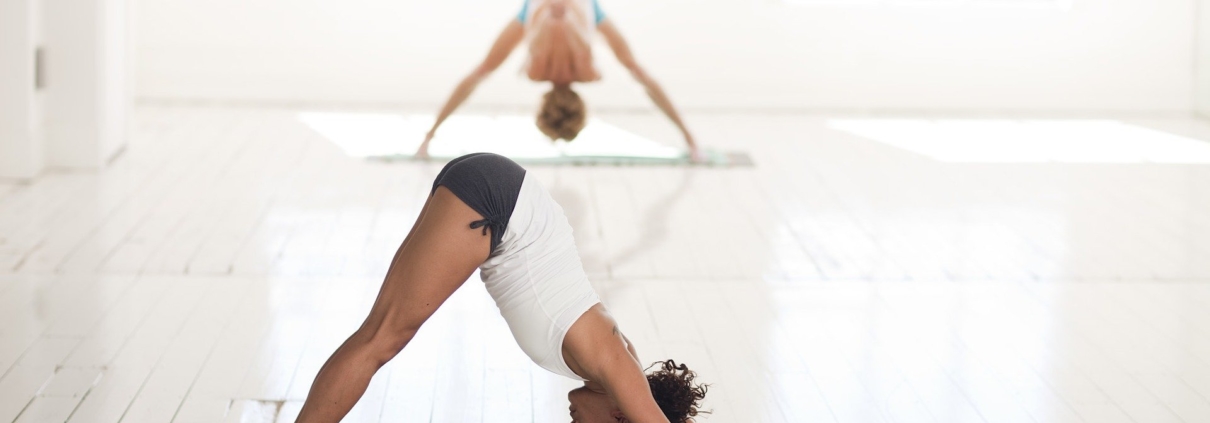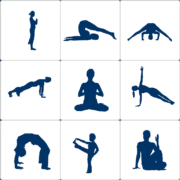Top 7 Yoga Poses for Diabetes
Studies have shown that in addition to lowering blood sugar levels, yoga can also improve sleep quality, help manage anxiety and depression symptoms, decrease fatigue during cancer treatment, and even relieve pain from arthritis or fibromyalgia. Do you know someone with diabetes? Yoga could be an easy solution for them.
Yoga is an ancient and time-tested exercise that has been practised for centuries. Yoga has many physical benefits, including improved circulation, flexibility, muscle strength and endurance. Yoga also can be beneficial for people with diabetes because it helps regulate blood sugar levels and increases insulin sensitivity.
In addition to these physical benefits of yoga, the calming effects of yoga may help reduce stress and anxiety associated with living with diabetes as well as improve mood. In general, Yoga can help with both physical and mental health issues associated with diabetes. Yoga has been proven in research studies as an effective form of exercise for managing type 2 diabetes, which accounts for 95% of all cases of the disease and yoga is also great for sleep so win win.
What is Diabetes?
Diabetes is a chronic condition that occurs when the pancreas doesn’t produce enough insulin or when cells in the body don’t react to insulin. This can lead to dangerously high blood sugar levels, which are bad for your health and can even cause death.
How does yoga help with diabetes?
People who suffer from diabetes have been encouraged to practice yoga as a form of exercise. The reason is that this type of physical activity can help people with diabetes keep their blood sugar levels under control, maintain cardiovascular health and improve mood. One study found that adults with Type 2 Diabetes are more likely to be diagnosed with depression if they do not engage in regular physical activity like yoga.
Indeed, Yoga is a great way to reduce stress and boost your immune system. With all the extra time we spend sitting, it’s no wonder our health declines. Studies have shown that in addition to lowering blood sugar levels, yoga can also improve sleep quality, help manage anxiety and depression symptoms, decrease fatigue during cancer treatment, and even relieve pain from arthritis or fibromyalgia. Do you know someone with diabetes? Yoga could be an easy solution for them.
Benefits of Yoga
Lowering stress levels
Yoga is an ancient practice, which many people find beneficial for their health. It can be used as a type of exercise and it may also reduce stress levels and anxiety. The question is: can it help with diabetes? Diabetes develops when the body does not make enough insulin or cannot use it efficiently. It can make an individual feel tired, weak and it can lead to long-term complications such as cardiovascular disease, nerve pain, and more.
For people with type 2 diabetes, diet and exercise are crucial for managing blood sugar levels. Yoga is often used as an alternative treatment in western medicine for treating various conditions including back pain, depression, anxiety, symptoms related to cancer, etc.
Lower Blood Sugar
The practise of yoga can help in lowering your blood sugar. Research shows that regular yoga practice can help you improve your diabetes control. A study of 46 adults with type 2 diabetes found that people who practised yoga at least twice a week for 12 weeks were able to lower their blood sugar levels by up to 26%.
A study of people with type 1 and type 2 diabetes also showed promising results. People in the group practising three times per week had an average decrease in haemoglobin A1c levels-a marker for long-term blood sugar control.
Increase Blood Circulation
The practise of yoga is known to increase blood flow. It is thought that this may help improve blood sugar control. There are many different types of yoga, so you can find one that suits your needs and schedule. Yoga classes typically include breathing exercises, poses designed to stretch muscles and increase flexibility, and meditation or relaxation.
Reduce Anxiety
Some people with diabetes who practise yoga report feeling less stressed out in their daily lives. While it’s not clear if this leads to a reduction in blood sugar levels-the cause of the disease-some studies have shown that yoga can increase your self-esteem and a sense of control over your diabetes. As always, check with your doctor before starting any new exercise program or diet. They can help you figure out the best approach for you.
Top 7 Yoga Poses for Diabetes
Which yoga poses are ideal for diabetes?
The following poses can help ease your diabetes condition by reducing stress and increasing your strength and flexibility. Performing these poses will certainly improve your quality of life and are appropriate for everyone regardless of fitness levels and ability. Of course, it’s advisable to consult your doctor when doing these poses.
The Mountain pose (Tadasana)
Step 1:Stand with your legs and hips part. Spread your toes wide apart. Stand tall with your legs but avoid locking your knees.
Step 2: Bring your attention towards the various muscles in the calf, front upper leg, back upper leg, and buttocks.
Step 3: Feel the muscles in your inner thigh and bring your knees a little outward but don’t overdo it. Make sure your muscles are relaxed and aligned by distributing the weight over your leg muscles.
Step 4: Try to hold the form over your legs while slowly directing your attention to your toes. Make sure the spine is upright
Step 5 Let your abdominal muscles and lower muscle engage to help stay upright. Take comfortable breaths in and out.
Step 6: Keep the same posture. Roll your shoulders up and down and repeat.
Step 7: Bring your chest a little forward. Give attention to your neck and make sure it aligns with your neck.
Step 8: Keep your gaze down and breathe in and out Stay in the same position for five or more breaths.
Downward facing dog(Adho Mukha Svanasana)
Step 1: Set your hand and shoulders apart
Step 2: Fold your toes and move into a position resembling a tripod tringe where your hips raised up
Step 3: Make sure your legs are straight and your heels do touch the floor
Step 4:Breath in and out as and gaze in between your feet or back of the wall
The Child Pose
Step 1: Kneel on your mat and ensure your back is straight and your knees get separated a little
Step2: Lower your chest to your thighs and your head towards the mat
Step 3: Position your arms towards your feet with your palms facing up. Your arms should align with your legs
Step 4: Hold the pose for a few minutes to find peace and tranquillity like that of a child
Step 5: Rise and bring your body back from the position
Bridge pose
Step 1: Lie on your back and ensure your feet and hips are apart.
Step 2: Lift your tailbone slowly but ensure your arms remain in position
Step 3: Interlock your palms underneath
Step 4: Make sure your heels are pressing down to the direction of your hands
Step 5:Breath in and out severally and release your hands
Step 6: Roll your back down slowly
Plank Pose
The Plank Pose requires a lot of core engagement to keep your body aligned so that you’re not arching or sagging in any way.Even though, It can be done in many different ways, and all of them are good for the body. It can be a challenging exercise, but with time it will become easier to do.
The plank pose resembles a person lying low like a log to the ground and propping itself on two twigs. To do this pose, find a quiet place where there are zero distractions and lie a mat on the floor.
Step 1: Start with your knees and hands on the mat. Ensure your wrist is positioned directly under your shoulders.
Step 2: Extend your legs while tucking your toes under and keep your arms straight or perpendicular to the mat.
Step 3: Looking down on the mat ensure your mat and neck are aligned
Step 4: Tug your abdominal muscles up to prevent your hips from sagging
Step 5: Ensure your body is aligned from your head to heels
Step 6: stay in the position for 30-60 seconds
The Tree Pose
Tree Pose is an important yoga position. It stretches the body and stimulates balance, strength, and flexibility. The pose takes on a myriad of forms with varying levels of difficulty from simple to challenging depending on the individual’s needs or experience level. If you’re new to this practice, it may be best to start out easy and work your way up as you become more comfortable with various poses. A good place to start would be The Mountain Pose (Tadasana).
It takes the most concentration of all the poses because it forces you to maintain balance on one leg, usually the left. You will want to be sure that your other foot has a good grip on the ground and that your arms are holding up a strong, balanced pose as well. This posture works best when done in a wide-legged stance with knees bent and feet flat on the floor so you can have more stability.
Step 1: Position your right foot firmly into the ground
Step 2: Raise your left foot and grab or hold the knee
Step 3: Open your knee like a gate
Step 4: Move your heel towards your thigh and thigh towards the knee. You’ll feel the two forces coming together.
Step 5: Put your hands into a prayer pose to find your midsection and find balance
Step 6:Take several breaths in the pose
Step 7: To come out of the pose, close remove your leg out of the gate position
Corpse pose
Step 1: Sit on your mat with your hands on the sides and ensure your kees are lightly bend
Step 2: Lie down by learning back through your elbows and move your legs forward until you find yourself resting on your back
Step 3: Spread your legs to help relax your muscle. Also, spread your arms a bit with palms facing up
Step 4:Rela and focus your main on the inside. Relax all your body muscles
Step 5: Stay in the position for any duration you like to allow your body and mindfully relax.
Bottomline
Diabetes is a chronic disease in which the body cannot produce or properly use insulin. Yoga has been shown to improve blood sugar levels and help with other symptoms of diabetes, such as high cholesterol and high blood pressure. Yoga improves diabetes by improving how the pancreas produces insulin, lowering stress hormones that can raise blood sugar levels, and helping you feel more relaxed so your heart doesn’t have to work as hard.











